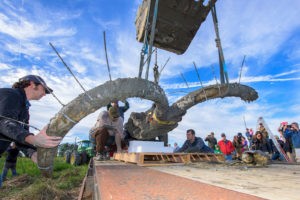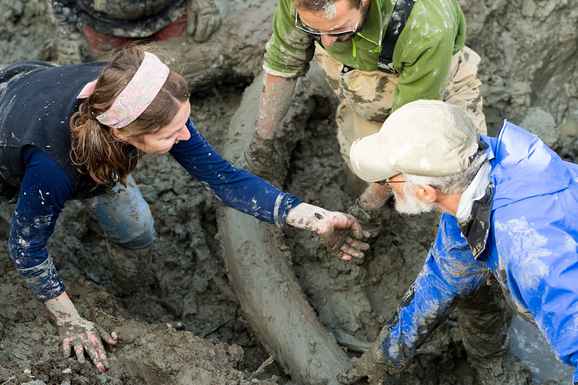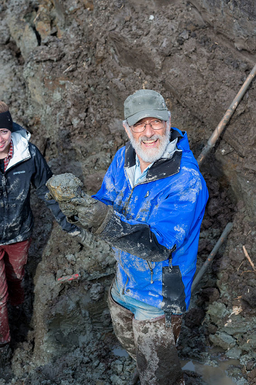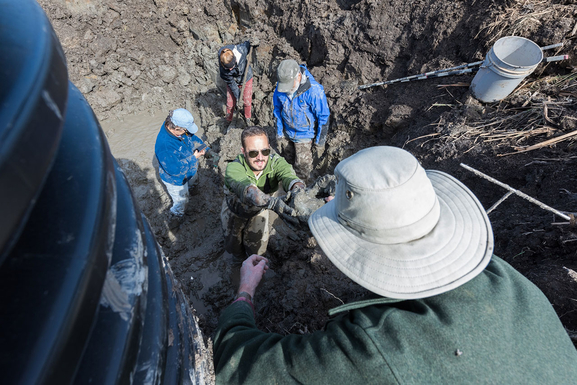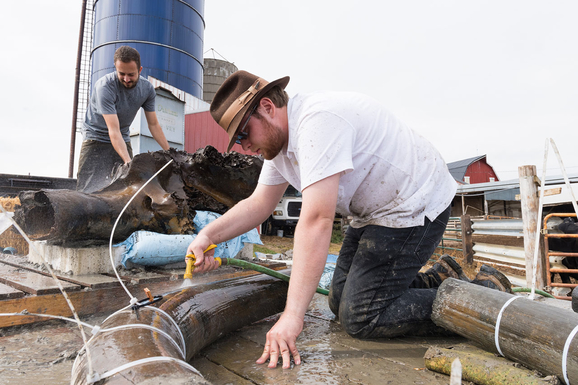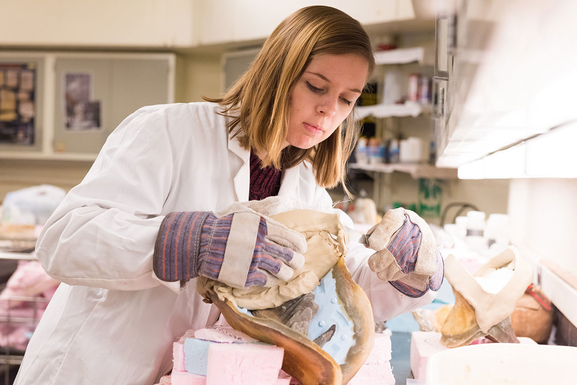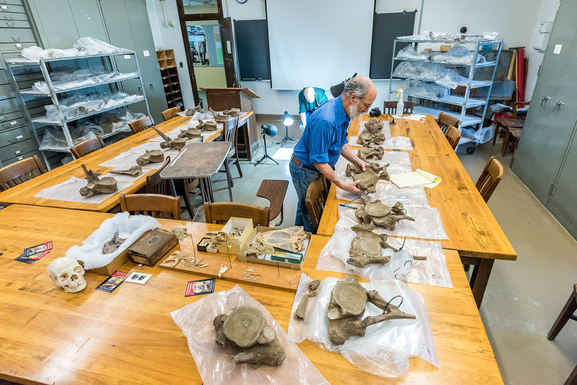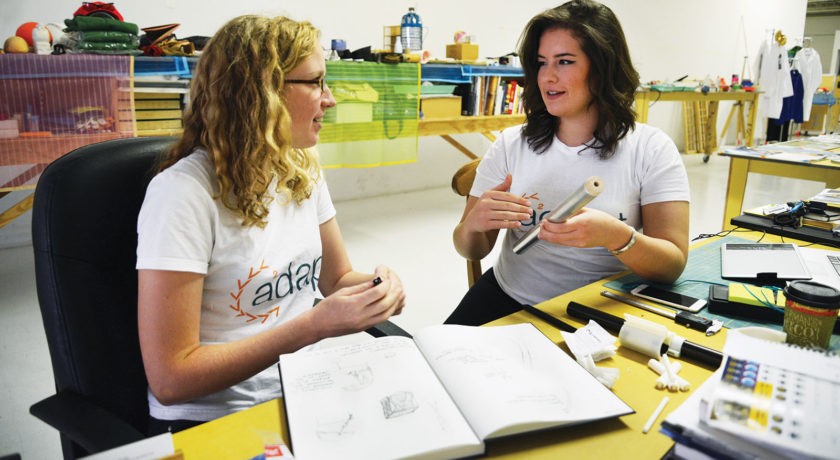Students take part in mammoth discovery
An ancient mammoth unearthed in September 2015 by a team of University of Michigan paleontologists that included undergraduate, graduate and doctoral students in a farmer’s field southwest of Ann Arbor may provide clues about the lives of early humans in the region.
Over the years, the remains of about 300 mastodons and 30 mammoths have been recovered in Michigan. The team was able to recover about 20 percent of the animal’s bones, including the skull and two tusks, numerous vertebrae and ribs, the pelvis and both shoulder blades. Most of the mammoth finds in Michigan have not been this complete.
The bones are from an adult male mammoth that likely lived 11,700 to 15,000 years ago, says Daniel Fisher, director of the U-M Museum of Paleontology and a professor in the Department of Earth and Environmental Sciences and the Department of Ecology and Evolutionary Biology, who led the dig. The site holds “excellent evidence of human activity” associated with the mammoth remains, he said.
Depending on the age of the mammoth and confirmation of the suspected links to human hunters or scavengers, the research conducted by Fisher and his paleontology students on this find could help push back the date for human habitation in what is now Southeast Michigan.
The Bristle Mammoth (pronounced BRIS-lee)—named for James and Melody Bristle, the farming couple who found the remains on their property and donated them to the university— will be on display at the U-M Museum of Natural History from Nov. 5, 2016 to Jan. 15, 2018. It will then be moved to the museum’s new location, which will open in 2019 in the U-M Biological Science Building.
Museum visitors can touch some of the Bristle Mammoth’s real bones, see some of the evidence for human activity at this site (such as the removal of edible tissues from parts of the carcass), and explore how the Bristle Mammoth’s bones, teeth and tusks will help scientists understand how these animals lived and why they became extinct.

